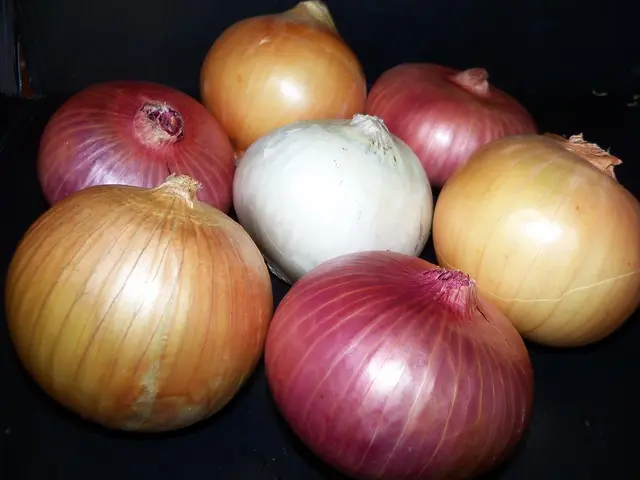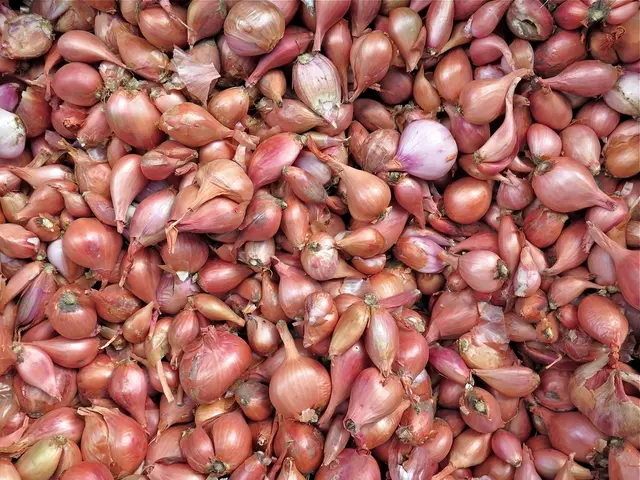Gardening Duties I'll Undertake Throughout May
Get ready to turn your garden into a lush paradise! May is the perfect time to kickstart your summer garden, but it's essential to start with the basics to ensure a thriving garden throughout the season. Here's your guide to transforming your garden in May.
Perform crucial garden maintenance tasks
Before the summer heat, give your garden a quick check-up. Your irrigation system might have faced some damage during winter, so inspect and clean each line before activating your irrigation for the summer. Also, test your irrigation zones, and check the system's controller by standing outside while testing each zone and walk around to examine the endpoints. A leaky line or peculiar noises might indicate a potential problem.
To maintain soil health and keep your garden looking tidy, apply a layer of compost enriched with nutrients to your established beds. Compost will aid in creating volume in your beds and act as a general fertilizer. Follow up the compost with a layer of mulch to secure moisture and suppress weeds. As you spread the compost and mulch, take notes on areas that require weeding or have signs of pests for future reference.
Shrubs, trees, and vines
Take advantage of blooming shrubs such as lilac and forsythia. Once they've bloomed, prune them back, and in some cases, like lilac, it might even trigger a second bloom later in the season. May is a great time to plant new woody shrubs and trees as the weather becomes milder, and the ground softens from the rains. Ensure you feed your established trees with the appropriate fertilizer, and prune shoots from trees to maintain their shape and fruitload.
Remember to disinfect your pruners and loppers before moving on to other plants to avoid transmitting diseases.
Annual flowers
Time to add some vibrant colors to your garden. Annual flowers are the perfect choice to provide pops of color that can last all summer. Garden centers should be brimming with annuals, such as petunias, lobelia, marigolds, and begonias. Plant these tender annuals after the freeze risk has passed and fill in areas between perennials blooming. Most hanging baskets consist of annuals because they're less likely to survive the winter. Keep an eye on the beds you're planting, ensuring they have a slow-release fertilizer, like Osmacote, and that they will receive regular watering.

Perennial flowers
Many people will have tulips blooming or have already bloomed at this point, so don't cut the flower heads until they've yellowed as tulips need their leaves to return next year. After tulips have bloomed, it's a great time to apply a bulb fertilizer. You can also plant dahlias and cannas now if the frost risk has passed. If you didn't get new perennials planted in April, you still have time to do so now or divide the perennials you have. If you'd like them to bloom this summer, prioritize this task for May.
Vegetables
Finally, it's time to get your vegetables growing! Gardeners across the country anticipate the moment to put plants like tomatoes, peppers, and eggplants in the ground. This month, start hardening off plants such as tomatoes, peppers, and eggplants according to their specific needs. If in doubt, join a local gardening group to discuss planting timings with fellow gardeners.
For perennial vegetables like asparagus and artichokes, ensure to harvest asparagus daily, taking only spears larger than your pinky, while observing artichoke plants for signs of stress or pests such as ants or aphids. Both asparagus beds and artichokes will benefit from a spring fertilizer. By mid to late May, almost all regions should be planting warm-weather crops like beans, corn, cucumbers, and many others.
Pest Control
To reduce snail and slug populations, deploy traps and go on regular evening hunts this month, as rainfall decreases. Install pheromone traps in your fruit trees to control summer pests and protect your fruit. Don't forget to manage weeds regularly to prevent them from spreading. By following these steps, you can ensure your garden flourishes and provides you with delicious produce throughout the summer.
- Perform crucial garden maintenance tasks before the summer heat, such as inspecting and cleaning irrigation lines, testing irrigation zones, and pruning spring-blooming shrubs.
- Apply compost enriched with nutrients to your established beds, followed by mulch to secure moisture and suppress weeds.
- Transform your garden in May by planting new woody shrubs and trees, pruning established trees, and adding annual flowers to create pops of color that last all summer.
- Divide perennials or plant new ones now to ensure they bloom this summer, and apply bulb fertilizer after tulips have bloomed.
- Start hardening off tomatoes, peppers, and eggplants according to their specific needs, and by mid to late May, plant warm-weather crops like beans, corn, cucumbers, and many others, while also controlling pests like snails, slugs, and summer pests in fruit trees.









